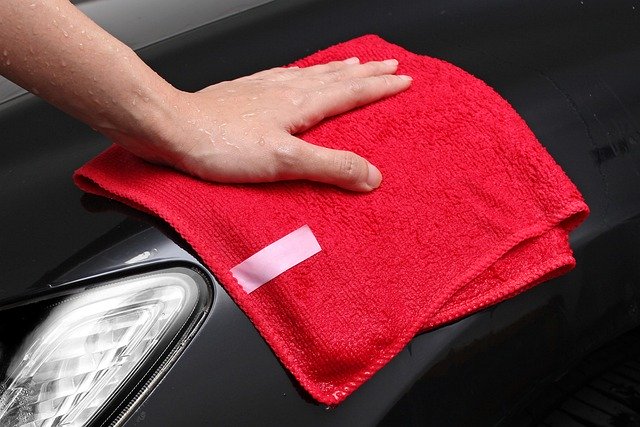Blinds serve not only as functional window coverings, providing privacy and light control, but they also contribute significantly to the aesthetics of any room. Whether your blinds are made of wood, fabric, aluminum, or any other material, keeping them clean is essential to maintain a fresh, appealing environment. Clean blinds not only enhance the overall look of your space but also play a crucial role in ensuring a healthier home by reducing the buildup of dust, allergens, and pollutants.
In this comprehensive guide, we’ll take you through a journey of cleaning your blinds with a variety of tips and tricks. We’ll explore how to identify your blind type and material, essential supplies, safety precautions, and the best practices for regular maintenance. You’ll learn the art of cleaning different blind types, from wooden and faux wood to aluminum, vinyl, and fabric blinds. We’ll also introduce you to specialized tools designed for blind cleaning, ensuring a more efficient and effective cleaning process.
Moreover, we’ll delve into the importance of avoiding harsh chemicals and abrasives that can damage your blinds, and instead, we’ll guide you on using mild soaps and detergents to preserve the beauty and integrity of your window coverings. Preventative maintenance strategies and determining the right cleaning frequency are also crucial topics we’ll address, helping you keep your blinds looking pristine and functional for years to come. So, let’s embark on this journey of transforming your blinds from dusty and dull to clean and beautiful, making your home a healthier, more pleasant place to live.
Blind Types
1.1 Vertical Blinds
Vertical blinds are commonly used for large windows and sliding glass doors. They consist of vertical slats, often made of fabric or vinyl, hanging from a track. Cleaning them involves a slightly different approach than horizontal blinds.
1.2 Horizontal Blinds
Horizontal blinds, like Venetian or mini-blinds, feature horizontal slats that are adjustable to control light and privacy. These blinds are versatile and widely used in homes.
1.3 Wood and Faux Wood Blinds
Wood and faux wood blinds are an attractive and popular option. Wood blinds are made from real wood, while faux wood blinds are typically constructed from composite materials. Cleaning them requires a delicate touch to avoid damage.
Essential Tools and Materials for Cleaning Blinds
Microfiber Cloths
Microfiber cloths are essential for dusting and wiping blinds because they trap dust and particles effectively without leaving lint behind.
Vacuum Cleaner
A vacuum cleaner with a brush attachment is invaluable for removing dust and loose dirt from blinds.
Cleaning Solutions
Depending on the material of your blinds, you may need a mild cleaning solution. Common options include a mixture of water and mild dish soap or specific blind cleaning sprays.
Tongs or Blind Cleaning Tools
Specialized blind cleaning tools, like tongs with microfiber covers, can make the process faster and more efficient.
General Blind Cleaning Tips
Regular Maintenance
Regularly dusting or vacuuming your blinds can prevent the buildup of grime and reduce the need for deep cleaning. Aim to clean your blinds at least once a month.
Protecting Your Hands
Wearing gloves can protect your hands from any sharp edges on the blinds or cleaning solutions.
Cleaning Direction
Always clean blinds from top to bottom, working in a downward direction. This prevents dust and dirt from falling onto already cleaned areas.
Dust First, Then Wipe
Start by dusting or vacuuming to remove loose particles, and then proceed with wiping or spot cleaning for a thorough clean.
How to Clean Vertical Blinds
Vacuuming
Use the brush attachment on your vacuum cleaner to gently remove loose dust and debris from the vertical blinds. Ensure you vacuum both sides of the slats.
Spot Cleaning Stains
For stains or spots on fabric vertical blinds, use a mixture of water and mild dish soap on a microfiber cloth. Gently dab at the stain, taking care not to saturate the fabric, which could lead to watermarks.
Removing and Washing Fabric Vertical Blinds
If your fabric vertical blinds are removable, follow the manufacturer’s instructions for removal. Machine wash or hand wash them as recommended, then hang them back up once they’re dry.
How to Clean Horizontal Blinds
Dusting and Vacuuming
Close the blinds and run a microfiber cloth or a duster along each slat, starting at the top and working your way down. Follow up by vacuuming the blinds to catch any remaining dust.
Deep Cleaning with a Soapy Solution
For horizontal blinds with more stubborn dirt or grime, mix a mild dish soap with warm water and dampen a microfiber cloth. Gently wipe each slat, ensuring you don’t oversaturate them. Wipe with a dry cloth afterward to prevent water spots.
How to Clean Wood and Faux Wood Blinds
Dusting and Vacuuming
The cleaning process for wood and faux wood blinds is similar to that of horizontal blinds. Start with dusting and vacuuming to remove loose dirt and debris.
Gentle Cleaning with a Wood Cleaner
Use a specialized wood or faux wood blind cleaner. Apply it to a microfiber cloth and wipe the slats, taking care not to oversaturate. Dry them immediately to avoid warping or damage.
Maintenance Tips
To maintain the finish and condition of wood blinds, consider applying a wood polish or conditioner periodically. Follow the manufacturer’s recommendations.
Troubleshooting Common Issues
Removing Stubborn Stains
For persistent stains, you may need to use a mild stain remover suitable for the blind material. Always test a small, inconspicuous area first to ensure it won’t damage the blinds.
Dealing with Excessive Dust
If your blinds frequently accumulate excessive dust, consider using an air purifier in the room to reduce airborne particles. Regularly vacuuming and dusting nearby surfaces can also help.
Fixing Bent or Damaged Slats
For bent or damaged slats, replacement is often the best solution. Contact the manufacturer or a professional blind repair service for assistance.
Benefits of Maintaining Clean Blinds
- Improved Indoor Air Quality: Dust and allergens can accumulate on blinds, negatively impacting the air quality in your home.
- Extended Lifespan: Regular cleaning can prolong the life of your blinds, saving you money in the long run.
- Enhanced Aesthetics: Clean blinds can transform the look and feel of your space.
- Healthier Living: Clean blinds create a healthier environment by reducing allergens and pollutants.
Conclusion
Cleaning your blinds doesn’t have to be a daunting task. With the right tools, materials, and a systematic approach, you can keep your blinds looking fresh and attractive. Regular maintenance and thorough cleaning will not only enhance the aesthetics of your home but also extend the lifespan of your blinds. So, follow these tips and tricks, and you’ll have clean, dust-free blinds that beautifully complement your living spaces. Enjoy the benefits of well-maintained blinds, from improved indoor air quality to a more comfortable and visually appealing home.














